Today is the day. After weeks and months of hard training, your strength training program finally calls for a new 1-rep max in the deadlift. You’ve got the gym to yourself, your favorite song pounding in your ears, and a loaded barbell before you.
You set up, wrap your hands around the bar — it’s a bit rusty and rickety, but that’s okay — and start to pull. The bar leaves the floor. Your new max is so close you can taste it. But then you feel the bar start to slip out of your palm and into your fingers before you lose your grip altogether.
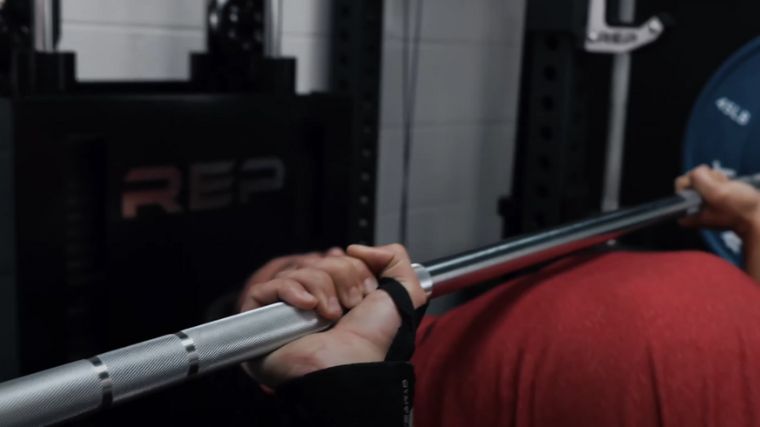
The weight might have been too heavy for you. Or maybe it had something to do with the knurling. What is barbell knurling? It’s that textured, gritty surface that allows you to maintain your grip on deadlifts, barbell rows, snatches, and much more. And a bar’s knurling can make the difference between setting a new personal record or feeling it slip out of your grasp.
What Is Barbell Knurling?
Knurling is a crosshatch texture found on the shaft of a barbell or the handle of a dumbbell. Its purpose is to provide friction and texture when clasped in the palm of the hand, and reducing the likelihood that the bar will slip.
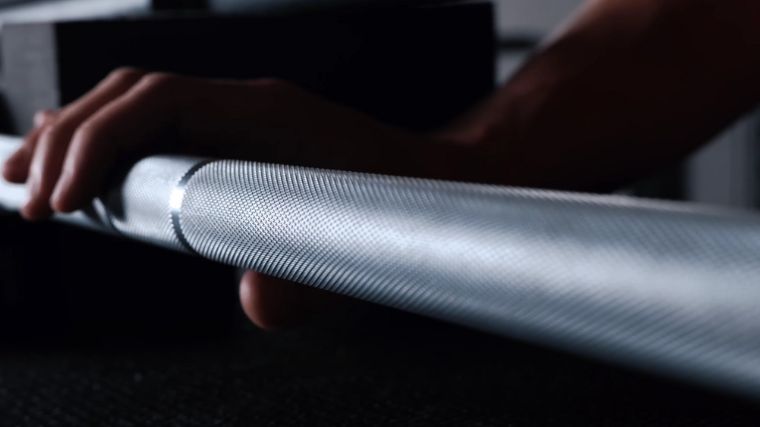
[Read More: The Ultimate Guide on How to Choose a Barbell]
All barbells come with knurling across the areas that are mostly commonly gripped for different exercises. However, there’s plenty of variance between the placement and style of barbell knurling.
3 Types of Barbell Knurling
Barbell knurling comes in different grades, and ranges from less “aggressive” to notably sharp or even painful. The more aggressive the knurling is, the better it does its job, but at the cost of incurring more wear and tear on your hands or clothing.
- “Hill” Knurling: Considered the least aggressive knurl texture. The diamond tips of the knurl pattern are rounded instead of pointy, providing a more comfortable but less secure grip.
- “Mountain” Knurling: You’ll find this knurl pattern on power bars or specialty bars designed for the heaviest deadlifts. This knurl creates the most secure grip, but is the most painful as well.
- “Volcano” Knurling: The most aggressive knurl pattern. The apex of each “point” has a very small divot, essentially creating four smaller points of contact with the skin.
Note that there is no industry-wide standard across manufacturers for grading barbell knurling. Sweden-based equipment manufacturer Eleiko Sport utilizes a point system to rank the sharpness of their knurling:
[Read More: Different Types of Barbells & How to Use Them to Gain Strength or Size]
- 1.0 knurling is considered mild. This type of knurling is good for technique practice, general strength training, and high-volume exercise.
- 1.2 knurling is used on bars certified by the International Weightlifting Federation (IWF) for professional training and competition, and is more aggressive.
- 1.5 knurling is applied to Eleiko’s powerlifting bars, and the extra sharpness of the knurl is meant to help powerlifters hold onto their heaviest deadlifts in competition.
According to Eleiko, their bars are placed into what’s called a lathe and slowly rotated. The bar rotates against two cylinders called bits, which engrave the waffle or cross-hatch pattern into the shaft.
Benefits of Barbell Knurling
- Foremost, barbell knurling improves the tightness of your grip on the bar when using it for strength training.
- Knurling also helps keep the bar snug against the body when held on the upper back or in the front rack position.
- Some barbell knurling comes with designated markers to help you consistently align your hand position.
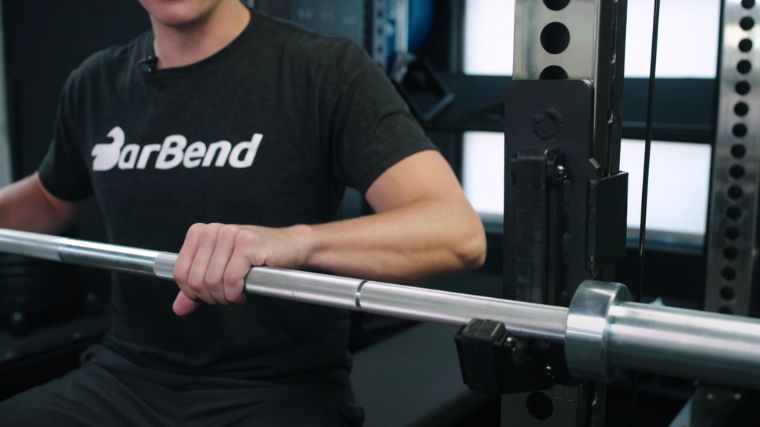
[Read More: What Are the Different Types of Barbells?]
Trying to lift on a bar without knurling is a bit like driving a car with bald tires. Sure, you’ll probably get where you’re going, but you won’t feel particularly secure on your journey.
Important Barbell Features
A barbell’s knurling is one of its most important features, but it isn’t the only thing that can make (or break) a bar. Barbells may look simple at a glance, but their construction is quite intricate. They’re a bit like golf clubs — sure, they’re all used for hitting the ball, but you wouldn’t putt with a driver.
Barbell Center Knurling
Some barbells opt to include what’s called “center knurling.” This is a section of knurling directly in the middle of the bar, usually about four inches long. Center knurling has pros and cons. Center knurling can help secure the bar in the front rack position if you perform power cleans, front squats, or overhead presses, but will also make that position more uncomfortable.
[Read More: 6 Weird (But Strangely Effective) Types of Barbells You’ve Never Heard Of]
On the other hand, you should notice an improved low bar back squat if you use a bar with center knurling, as the grit of the bar digs into your upper back and prevents sliding.
Barbell Coating
The coating or finish of a barbell is mostly an aesthetic choice. Bars come in far more options nowadays than in years past, so if you have a particular favorite color or style of barbell, you can probably get ahold of it.
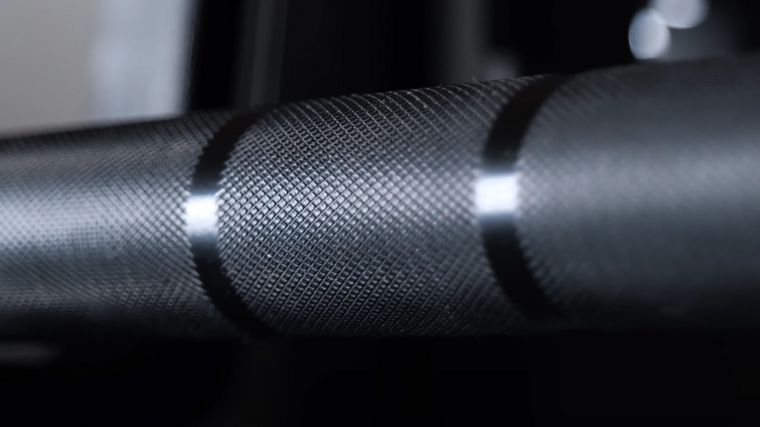
[Read More: How to Clean and Care for a Barbell]
Bare steel or stainless steel bars have no coating at all, and give you the “purest” experience. On the other hand, black oxide is a common barbell finish. Other applied barbell coatings include zinc, chrome, Cerakote (which account for most colored barbells), and so on. Some of these options may fill in the crevices of a bar’s knurling, diminishing its texture.
Barbell Knurl Rings
Almost all barbells will have at least one pair of “rings” in the knurling. These are gaps in the knurl pattern and are meant to help athletes establish a consistent hand position for exercises like the snatch or deadlift. Some powerlifting federations also use the knurl rings to regulate certain technical choices like the maximum grip width during the bench press.
Barbell Spin
A barbell’s “spin” refers to how fluidly the shaft rotates in your hand. The sleeve of the barbell rotates independently from the shaft as well, but shaft spin is of particular importance to Olympic lifters.
Weightlifters who perform the snatch and clean & jerk need to rapidly adjust from pulling the bar to pushing against it, which requires a bar that has enough spin to quickly turn over as the athlete moves through the air.
[Read More: The Best Barbells for Women for Value, Competition, and More]
Barbells with inadequate spin are considered unsafe for certain exercises. On the other hand, it is possible to have a bar with too much spin, which can make it difficult to stabilize and control if held overhead.
Barbell Bearings vs. Bushings
Bearings and bushings are the two mechanical inserts that affect a barbell’s spin, and each come with their own benefits and drawbacks.
Bushing bars are more common and less expensive than their bearing counterparts. Most general-purpose barbells and powerlifting bars contain bushings, since they aren’t utilized for the kind of high-velocity movements found in Olympic lifting.
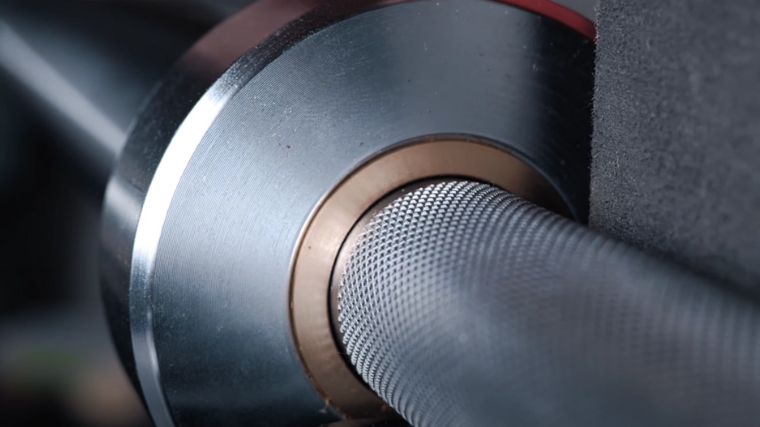
[Read More: Best Barbell Grips]
Conversely, bearing barbells tend to have a higher price tag, but are more durable. Bearing bars are utilized in weightlifting competitions and provide the smoothest and most consistent in-hand experience.
Your Takeaways
If you’re in the market for a new barbell — or are just wondering why your hands hurt after a barbell-based workout — you need to understand what knurling is and how it affects your training.
- Knurling is a crosshatch or waffle pattern engraved into the shaft of a barbell for the purpose of improving grip strength.
- Knurling comes in various patterns and textures with different degrees of sharpness.
- Generally speaking, the more painful a knurling pattern is, the better it will be at helping you maintain your grip.
- Different barbells come with different knurling placements. Some put knurling in the center of the bar, others don’t.
- Ultimately, knurling is mostly personal preference. If you’re trying to buy a barbell you should consider what you’ll use it for and if the knurling is appropriate.